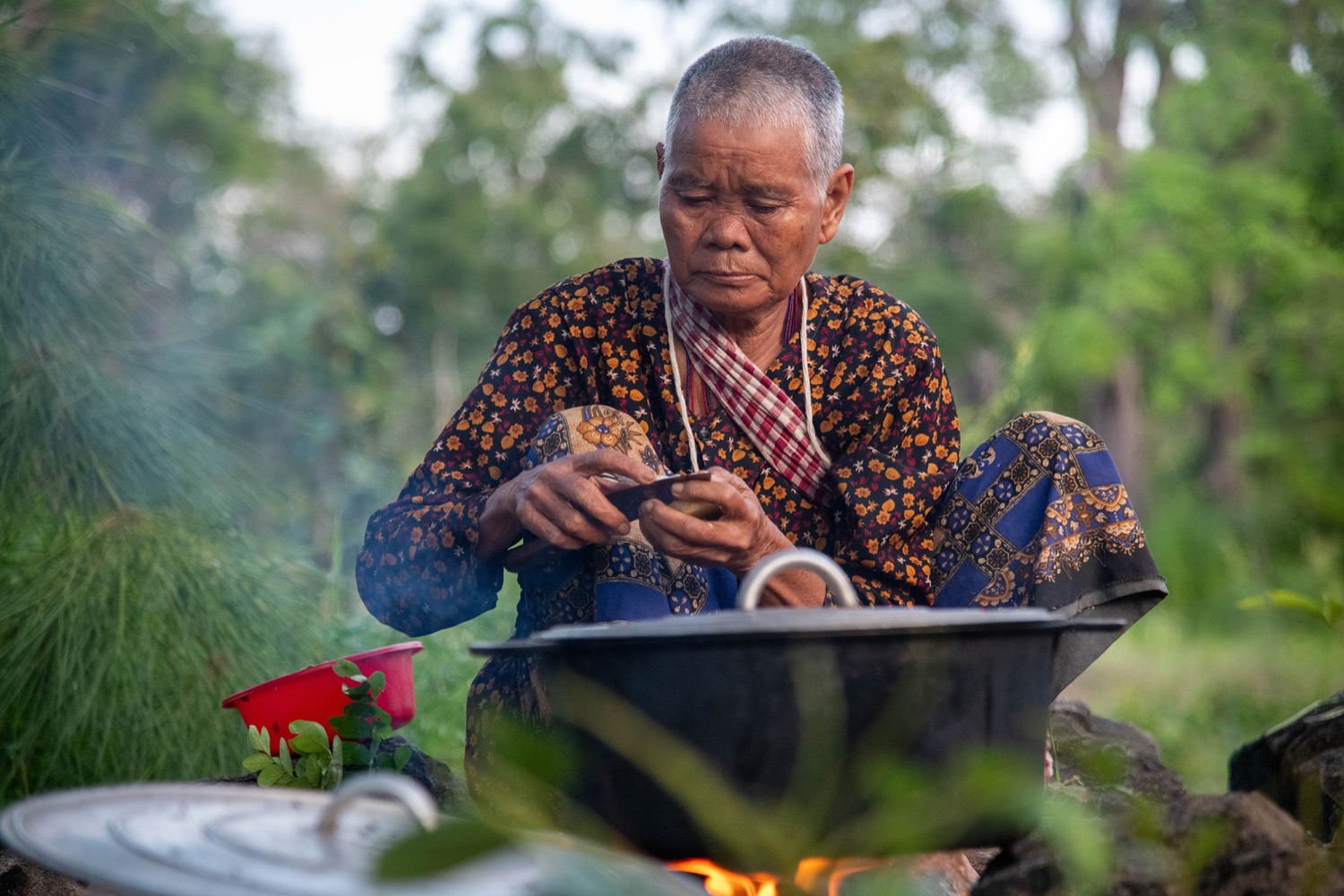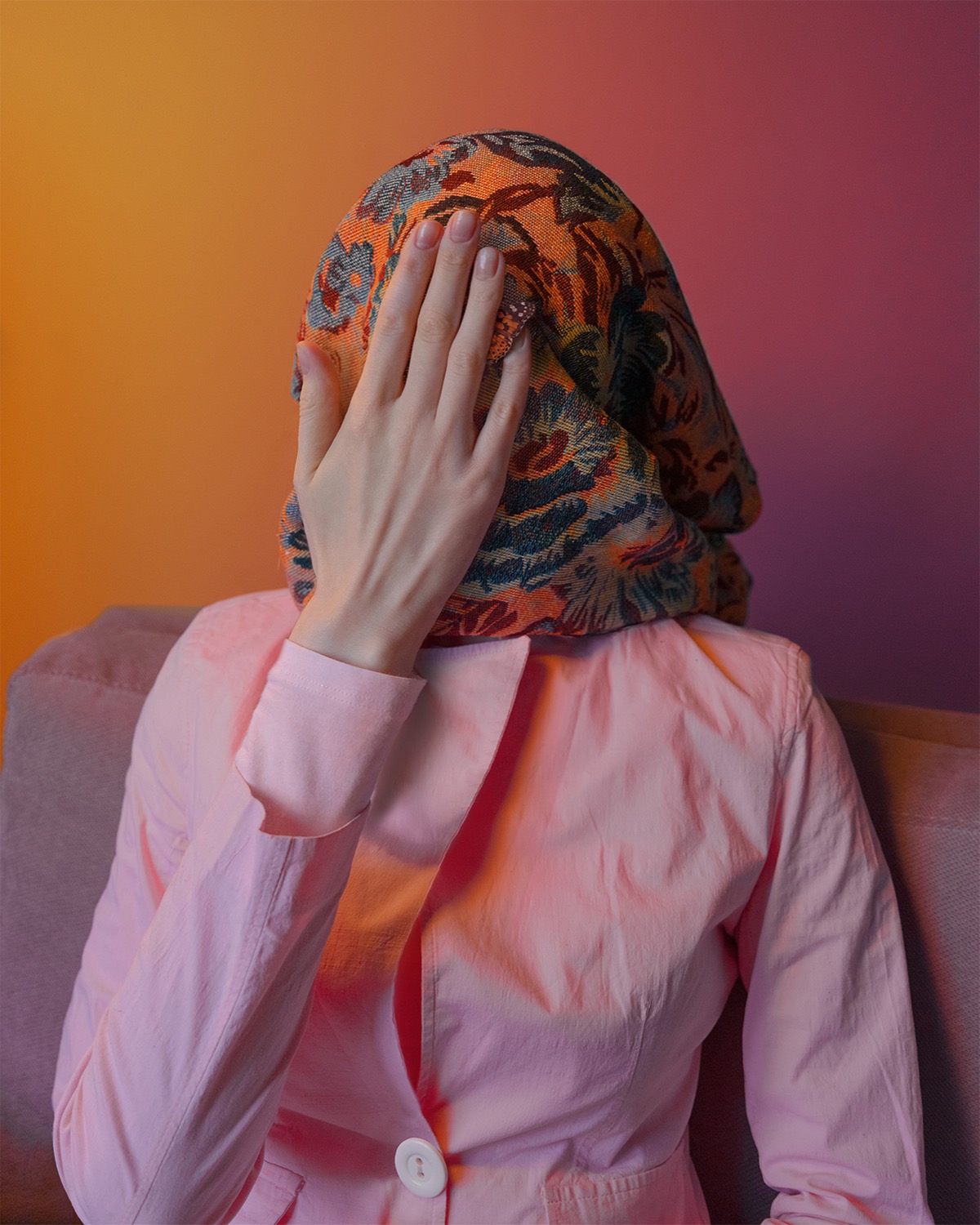
Imagination of the real world
Erwin Olaf
The development of Erwin Olaf's work reflects the emancipation of photography
Artdoc

The development of Erwin Olaf's work reflects the emancipation of photography in our visual culture. At the start of his career, he was primarily seen as a photographer, and now he is internationally regarded as an artist par excellence, who uses photography as a medium. His photographic images were conceptual from the start and told stories that connect his inner life with the world around him.
The origin of Olaf's artistic approach to photography is the versatility of his sources of inspiration in his early years: the music of David Bowie, the visual arts of Andy Warhol, among others, the painting by Yves Klein, and the Italian and German film, by Visconti and Fassbinder.
The early photos of Erwin Olaf sparkle with the powerful, rebellious energy of an angry young man, portrayed in the black and white images of his first series Chessmen from the 80s, which are bizarre and extravagant. His portraits, sm-photos, and the portraits of the wild nightlife were extremely confrontational. It was his overwhelming debut, full of expressive freedom, associated with the discovery of his homosexual orientation. Robert Mapplethorpe photographic sources of inspiration, and Joel Peter Witkin, clearly trickle through in this period.

In his series Blacks in the 90s, in which he depicted princes and guerrillas, he clearly showed his position in respect of race and discrimination. He took pitch-black photos, inspired by a Janet Jackson song with the text: "We are all the same in complete darkness." The series was a reaction to his discrimination experience. Also, in this series, he showed himself as a director of his imagination, by which he reacts to the world around him.
Payment Failed

Pain and human contact
After his early series, mainly shot in black and white, Olaf got tired of his rebellion, and of his advertising work. The change in his work was also fed by severe criticism of his revolting series Fashion Victims. Olaf decided not to take assignments anymore but to concentrate exclusively on his personal work. From the beginning of this century, his mature work started to develop, also suggested by the title of the first series, Mature. The series he subsequently made Rain, Hope, and Grief, which showed all a sense of desolation. In all his works during this period, the feeling of lack of human contact played a major role. Olaf also expresses his anger about political developments, especially those of America.
While life is perfectly orchestrated, the restrained emotion of the hidden suffering keeps playing a whispering undertone
A photo from the series Grief, the portrait called Margaret, shows a woman with a glass of liquor on the table in a '60 aristocratic class style. She sits, perfectly dressed, in a stylish environment. Everything is perfect, from her hair to her watch, but in the end, she is alone. This picture sums up the style, method, and theme of Olaf. All women in Grief give the impression of widows or divorced women. While life is perfectly orchestrated, the restrained emotion of the hidden suffering keeps playing a whispering undertone. The surreal photos of Grief seem to focus on the unknown personal suffering of his characters. Still, it is precisely the universal suffering that Olaf focuses on in this series. He thinks that the attention of the media for the petty bourgeois;individual suffering is a distraction of real social problems. According to Erwin Olaf, reality shows on television portrays false attention to human suffering. As long as we are concerned with our little sadness, we don't have to look at the bigger universal and political problems.

In his series Shanghai, a sequel to Berlin, Olaf translated the loneliness and alienation in the big metropolis. Often women, but also children pose in these photographs, in closed spaces with subdued light or outdoors in dark environments. They represent the emotions of our modern life. On one of the photos, you will see a perfectly dressed young woman with her handbag standing in the doorway. She seems to doubt whether she would leave or not. Like so many other photos, the image appears to be a film still from a dramatic film.
Palm springs
Also, his last series Palm Springs shows that Erwin Olaf likes to move out of the studio. This series is about an artificial city in California where everything is supposed to be perfect, a backdrop of luxury and excess, but ultimately it is not. Olaf used Palm Springs as a backdrop and as a metaphor for a perfect world with a crack in it. In the photo, Palm Springs, American Dream, Self-Portrait with Alex, ( 2018 ), on which he himself poses - a small wink and reference to the painter David Hockney - with a cocktail glass in his hand, on the edge of a swimming pool, watching a young man standing in the water, his ideas about the world and his private feelings come together. The environment seems an ideal setting, but the older, more mature man who is Olaf himself, sees the limitations of his body and the finitude of life. The photo and the entire series treat the decline of the city as a symbol of the Western world. It is also a political statement about the world. In the portrait The Worker of a black man, it is clear, given the earlier series of Olaf that he comments on the relation between races and classes.

Involvement
Erwin Olaf, despite his journalistic background, could not be called a documentary photographer. He always mixes reality with his fantasy. Therefore, his photography may seem form-driven, but his desire has always been to depict his feelings about the world in an abstract style. That is precisely why Erwin Olaf has contributed to the emancipation of photography as visual art. Now having received recognition and maturity in his staged style and museums have opened their gates for him, he wants to return to documentary photography, or 'documentary style,' without staging and post-processing. And that's actually not surprising, because the work of Erwin Olaf, as refined and personal as it may be, has always been embedded in his social commitment. You might consider all his work as a reaction to time and history. This certainly applies to his latest series Berlin, Shanghai, and Palm Springs. With his latest series, Olaf expresses the fear of the demise of the modern world. In an interview with Wim van Sinderen, the curator of The Hague Photo Museum, he says about this: "As a student, I already wrote about what would happen if the bomb fell. Meanwhile, I sit on top of the wave. Still, all my life, I have been afraid of the end of our vulnerable, pretty democratic system in which we are fortunate to live." (In: Gup Magazine, 2019)
Erwin Olaf (1959) was born in Hilversum, the Netherlands. He started his career in photojournalism with reports about the nightlife in Amsterdam. His recent series Berlin, Shanghai, and Palm Spring are part of the Metropolises project. The book I am presents an overview of his extensive oeuvre.
web: www.erwinolaf.com
book: Erwin Olaf, I am, Hannibal, 2019
.svg)
.svg)
.svg)







